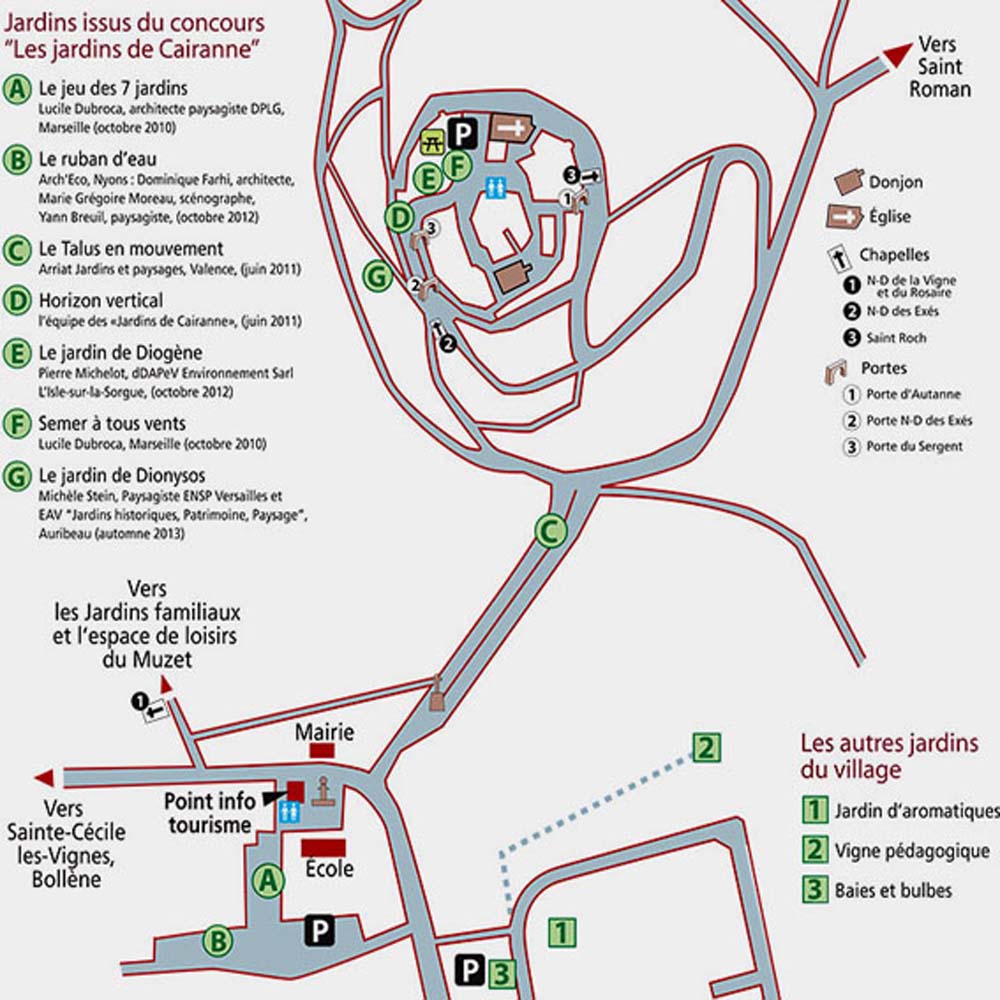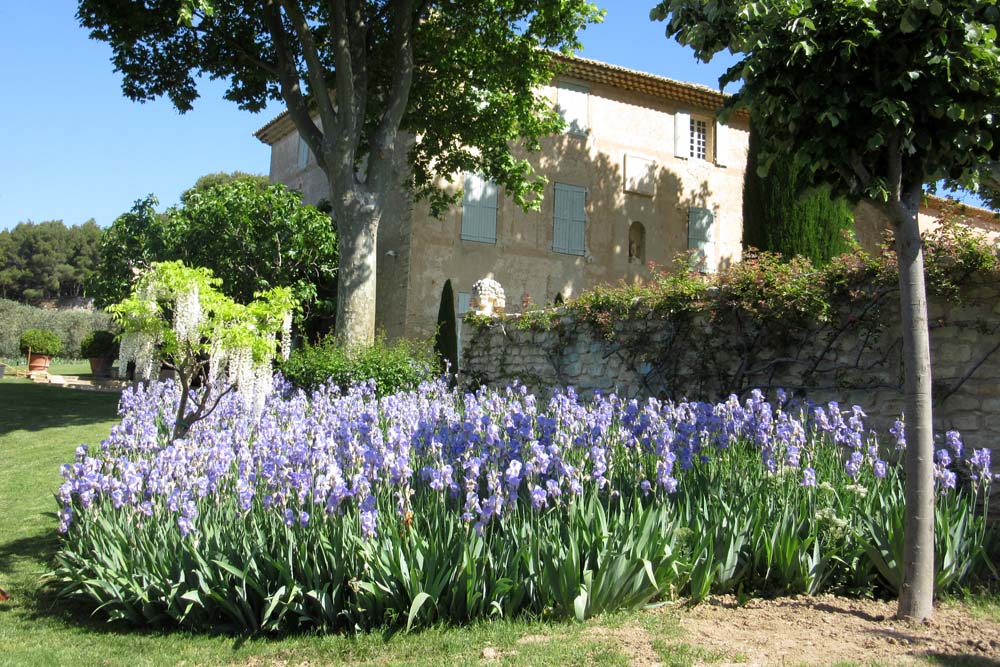May / mai 2015 – The MGF Annual General Meeting
L’Assemblée Générale 2015, Crestet, Vaucluse
Three days of activities in the Vaucluse / Une excursion de trois jours dans le Vaucluse.
Click on the images to enlarge them / Cliquez sur les images pour les agrandir
A botanical walk on the north side of Mont Ventoux
Around 25 members arrived the day before the main events in order to explore the flora of the northern flanks of Mont Ventoux. Kevan Kristjanson and Jennifer Hastings led a walk starting at Mont Serein, at a height of 1400m. We were accompanied by Françoise Gasnier, a local botanist, and three members of the Malaucène association ‘Apprendre des Anciens’ which encourages people to learn about local plants and how they can be used.
The first part of the walk was along relatively flat terrain through light woodland towards Le Contrat, a wonderful viewpoint north and east towards the Alps. Alongside the path we found Hepatica nobilis, Alchemilla alpina, Tussilago farfara and Primula veris.
The path continued through a forest of beech, pine and larch, with some very ancient beech trees, including an interestingly shaped example. Plants observed here included Viburnum lantana and Narcissus poeticus.
The more adventurous of us then continued along a precipitous path to the Combe de Fanfioul, a wide scree couloir. We had hoped to see chamois here, but instead found some endemic plants and enjoyed the stunning views.
Next we climbed through mountain forest, with a few shy chamois appearing through distant trees, lots of birdsong and eventually emerging to a wide open meadow dotted with juniper and amelanchier bushes.
Along the way we found more treasures:
Our thanks to Françoise for plant identification and to Hélène Allemand and the other members of Apprendre des Anciens for passing on their knowledge about how the different plants could be used in culinary, medical and practical ways.
Text: Christine Daniels
Photos: Hubert Nivière
On descending the mountain Françoise and Hélène joined us at Mas d’Arfuyen in Malaucène, home of Christine Daniels and her husband Anthony, to meet other MGF members who had just arrived for the AGM. Aperitifs in hand, some wandered through the garden and up along the hillside terraces.
Annie and Hubert Nivière, experts in wild orchids, identified and photographed a number of different orchid species growing wild in the garden.
Others just wandered the garden paths, enjoyed the wine, and relished the chance to catch up with gardening friends.
Text: Christine Daniels
Photos: Hubert Nivière and Anthony Daniels
Visits to gardens and a winery in Cairanne and the MGF Annual General Meeting
Cairanne is a hilltop village not far from Vaison-la-Romaine. Its public gardens have been developed in an interesting way and we also had the opportunity to visit the garden of MGF member, Helga Bolin.
Helga has developed her garden both around the house and in an area on the other side of the street on a site which overlooks the surrounding country towards Orange to the west. Planting is almost exclusively Mediterranean plants that can tolerate drought in summer and frost in winter and there was plenty of colour. The garden was beautifully maintained and included a wide variety of plants. Helga designed and planted the garden herself, most of it on a previously bare hillside. She had placed large boulders at strategic points on the steep slope to stabilise the soil.
In 2010, the village of Cairanne had the brilliant idea of turning every spare patch of public land into a garden with a special theme, each one suited to its situation and with great attention to native drought-tolerant plants. They held a competition, open to gardeners, botanists and artists and stipulated that water conservation and the selection of plants adapted to wind and dryness would be important factors.
The first competition was entitled ‘Invitation à copier‘. Four gardens were created (A, C, D and E on the plan). The idea was to show gardens which people could easily make at home. The second competition, entitled ‘Jardin Refuge’, was initiated in 2012, and resulted in the water ribbon and a garden which provides a refuge for insects.
Starting at the car park at the bottom of the village we found the Ruban d’eau, a winding decorative conduit at waist level in a style often seen in Italian Renaissance gardens.
Close by there was a garden intended for teaching the principles of gardening to children from the adjacent primary school. It was excellently laid out, although some of the plants were missing, and had a strong emphasis on vegetables. The pedagogical interest of this garden was first class. To capture the children’s interest, the plant species were grouped to echo the seven Happy Families game: famille garrigue, aromate, tisane, jardin, odorante, potager, pré.
Walking up the hill between the new and the old parts of the village we passed Garden ‘B’, ’Talus en Movement’ inspired by Gilles Clément’s ideas. The bright flower colours, red, pink and white, were chosen to echo the colours of Cairanne wines.
Past Helga’s garden, we reached some of the other public gardens ‘Horizon vertical’, ‘le jardin de Diogene’, (which had been provided with a barrel ready to house the Cynic philosopher) and ‘Semer à tous vents’. All were well stocked with plants in a typical ‘dry gardening’ style.
We enjoyed picnicking in a pleasant area shaded by mûriers platanes and with magnificent views across the valley.
After lunch we visited Domaine Armand, an old-established family winery at the foot of the old village.
Audrey Armand took us into the fields to see a number of varieties of vines and enthusiastically explained about different pruning styles and cultivation methods. She said that typically the roots will go down to 30 metres so that the vine can survive the summer drought, but some very old vines (around 80 years old) have been found with roots going to a depth of 100 metres.
Naturally, the visit concluded in the cave, with a tasting of AOP Cairanne wines.
The early evening saw us assembled once more for the AGM. The meeting took place in the salle polyvalente in Crestet and was attended by 46 members. The minutes of the meeting are available in the MGF section of the members’ forum.
After the traditional pot amical we were welcomed by Fiejette and David Worm and their family for dinner at their restaurant, La Fleur Bleue, Crestet.
Text: Rosemary Halford and Jennifer Hastings
Photos: Rosemary Halford and Hubert Nivière
A visit to the garden of Jas Crema in Le Barroux
Our visit to Jas Crema was blessed with idyllic provençal weather. This is a garden in a perfectly perfect setting. How else could one describe a site with views to the Chateau du Barroux in one direction and to Mont Ventoux in the other?
The garden was created in the 1980s by Baronne Lulu de Waldner in an English style, and then adapted to local conditions by her daughter. Around it is an estate of 25 hectares with 1500 olive trees, all Olea europaea ‘Verdale’.
A number of people chose to sit on the shady terrace just drinking in the view with a glass of something cold in their hand. Drifts of irises were in full flower, their perfume wafting around us.
The formal part of the garden has roses, abelia and mass plantings of Erigeron karvinskianus, Ceratostigma plumbaginoides and Convolvulus mauritanicus. The courtyard and house walls support climbers Rosa ‘Etoile d’Hollande’ and Rosa ‘Compassion’. To one side, an abundance of arches were covered in Rosa ‘Cécile Brunner’.
The unusual and beautifully carved stone which was on display around the garden and the impressive stone fountain base in Mughal style, completed the scene.
With a bit of a squint the Trachelospermum jasminoides topiary elephant (the emblem of the garden and mentioned in a report written in 1992 by a group of visitors from the University of California) was just discernible.
Before we left, our hosts, Fatima and Ricardo, made sure we didn’t miss the poulailler (hen-house) with its magnificent scarecrow and contented-looking occupants.
Text: Gill Clarke
Photos: Gill Clarke and Hubert Nivière
Exploration du parcours botanique de l’Espace Botanique des Piboules
L’Espace Botanique des Piboules est situé sur la rive gauche de l’Ouvèze, à Entrechaux (84), à proximité du pont roman Saint-Michel.
Le sentier botanique naturel les Piboules a été réalisé au cœur de la ripisylve, formation végétale qui s’étend le long de la rivière, par l’Association Voconces Environnement, sur un terrain d’un hectare et permet de découvrir une partie de la flore du Haut Vaucluse.
Le but de cette association est de préserver l’environnement du Pays Voconces et de faire découvrir l’environnement local de façon à le respecter et à en profiter le plus longtemps possible. Joëlle Bauer, présidente de l’association, nous a accompagnés pour cette visite.
En empruntant le sentier botanique, entre canal et rivière, on découvre plus de 160 espèces de végétaux qui étaient déjà présentes sur le lieu avant son aménagement. Rien n’a été planté. De nombreux végétaux y vivent en étroite relation avec la rivière. Ils sont parfaitement adaptés aux conditions de sol et de climat qu’elle y a créé. Ils jouent un rôle important dans la protection des berges en les fixant solidement par l’enchevêtrement de leurs racines.
D’autres plantes dont l’habitat se trouve en amont, ont été apportées là par la rivière qui a charrié leurs graines en même temps que graviers et limons. On trouve aussi quelques plantes de terrain aride qui ne sont pas là dans leur milieu favori, comme le genévrier cade, le pin d’Alep, la lavande aspic, l’aphyllante… La proximité des collines sèches qui dominent l’Ouvèze explique qu’on les trouve ici en petite quantité.
Des plaquettes et des pupitres permettent au visiteur de découvrir le nom scientifique, le nom vernaculaire et parfois le nom provençal de nombreuses plantes ainsi que leurs principales caractéristiques.
Quelques espèces remarquées :
- Abies alba
- Alnus glutinosa
- Aphyllantes monspeliensis
- Coronilla minima
- Euphorbia nicaeensis
- Fraxinus angustifolia
- Genista scorpius
- Helleborus foetidus
- Juniperus communis
- Juniperus oxycedrus
- Linum campanulatum
- Malus sylvestris
- Pinus sylvestris
- Populus alba
- Prunus mahaleb
- Robinia pseudoacacia
- Rosa canina
- Salix eleagnos
- Salix purpurea
- Sorbus domestica
- Spartium junceum
- Tilia platyphyllos
Une balade à renouveler pour noter les évolutions…
Pour plus d’informations et photos de ces plantes voir: Plants along the Piboules botanical trail
Texte: Annie Nivière
Photos: Hubert Nivière
The AGM event concluded with a delicious picnic lunch prepared by Kevan and Jennifer. We sat under trees on the rocks by the river – later some people went paddling…
![]()







































































